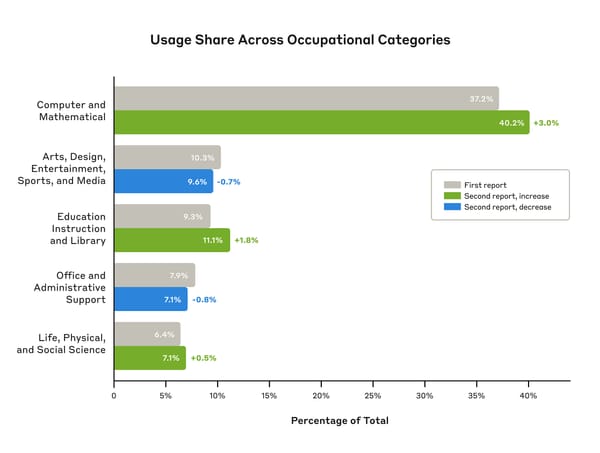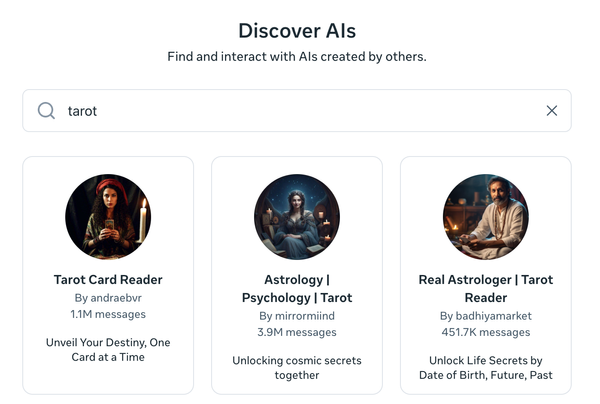Why journalists can't quit Twitter
The media should be building alternatives. Instead, some are doubling down

Today, Donald Trump was charged with 34 felony counts of falsifying business records in connection with a series of hush-money payments related to the 2016 US presidential campaign. His arraignment was carried live on cable news and National Public radio, but I learned of the day’s events where I still see almost everything first: Twitter, which, despite its perilous decline under Elon Musk, remains home base for the U.S. press corps even as the site itself increasingly orients itself to make fools of them.
In December, I predicted that 2023 would be the year that the media would begin its divorce from Twitter. “Elon Musk’s continued promotion of right-wing causes and personalities will push away more and more high-profile users, who find themselves increasingly put off by his shock-jock antics and whim-based approach to content moderation,” I wrote. “Alternative platforms like Mastodon, while smaller and less intuitive to use, offer a safe haven to more and more people — particularly journalists — looking for off-ramps. By the end of 2023, Twitter no longer sets the daily news agenda by default for the entire US press.”
Almost four months later, this prediction looks more and more wobbly. The first part has more or less come true: journalists are put off by Musk’s antics, and dunk on him daily. But those same journalists — along with a bunch of people Musk arbitrarily suspended, fired, or laid off — continue to tweet just the same, propping up the service with their quips and sports tweets and food photos just as they always have. And while some of the company’s competitors show intermittent signs on life, none has taken on the feeling of a daily must-visit in the way Twitter did and still does.
By some measures, Twitter usage is down from previous highs. But among the 900 or so tech and media professionals I follow, usage is basically steady. The timeline may scroll a little more slowly than it used to, but everyone is still showing up for their daily dose of sparring for retweets. And I think it’s worth taking a moment to reflect on why.
The first and most obvious reason is inertia. Journalists spent more than a decade building up their presences on Twitter, and they were never going to abandon the site collectively overnight. As long as they can still drive traffic to their stories, discuss those stories in public with their peers, and grow their audiences, they have little reason to leave. Some, like Big Technology’s Alex Kantrowitz, even see opportunity amid the decline: if big publishers won’t pay for Twitter Blue and the potentially bigger audience that comes with it, he will — and, he reasons, his own work will stand out more.
The second answer, I think, lies in the power of chaos to command our attention. Just as Trump’s tumultuous White House constantly kept the news cycle off balance, so, too, does Musk’s erratic leadership of reporters’ favorite website. On Monday, everyone logged on to see that the old birdhouse logo on Twitter’s website had been mysteriously replaced with the Shiba Inu from the doge memes. Was it an April Fool’s Day joke that shipped a little late? A wink at a lawsuit Musk faces over charges that he unlawfully promoted the Dogecoin currency? Or just something to make the boss laugh?
Whoever might know the answer isn’t saying. But the mystery has become part of Twitter 2.0’s allure. Will reporters and news outlets lose their verification badges? (Yes, but only at random.) Will the site even work? (Yes, but less than it used to.) What new view counts will be added to each tweet? (Here, for no particular reason, is the bookmark view count.) Where else will Musk’s name be found in the site’s source code? (In the recommendation algorithm, ensuring his tweets are seen more than other people’s.)
Compare this Lost-style alternate reality game with the humdrum boredom of Twitter’s upstart rivals: Mastodon, T2, Post. Each has something to recommend it — I’ve been spending most of my posting time lately on Mastodon, whose low-drama founder and decentralized structure appeal to me — but all lack the animating force of Musk as a main character, rampaging across the timeline each day like a Tesla-driving Green Goblin.
Finally, the alternative apps are all still missing something. Mastodon’s decentralized network can make basic concepts like following another account more difficult than users are used to; its lack of an equivalent of quote-tweeting (for now) makes a lot of basic Twitter-like discourse impossible. Post and T2 lack original content or distinguishing features. Artifact hasn’t shipped its social feed out of beta yet.
I find all of this depressing. In December I began posting to Twitter only as a kind of RSS feed, re-sharing my Mastodon posts about new newsletter editions and podcasts, hoping that others would join me. To date, few have. I miss the conversations I used to have on Twitter, but not enough to contribute free labor there.
It may be that Twitter is immortal after all. But there are still more shoes yet to drop. There will almost certainly be a series of regulatory fines related to hate speech and data privacy, potentially reaching into the billions of dollars. The collapse in advertising and API revenue, mounting debt payments, and the utter flop that has been Twitter Blue could all lead the site into bankruptcy. And should Musk follow through with plans to make the site basically unusable for free accounts, Mastodon and its peers will have a renewed opportunity to attract users.
For the moment, though, Musk has learned the same lesson Jack Dorsey did: Twitter is extremely hard to kill. And for the journalists who have come to rely on it, there is almost no indignity they won’t suffer to get their fix.
The other day, the company’s old press email address started responding to reporters’ queries with an automated 💩 emoji. Musk tweeted about it, and reporters soon gleefully confirmed it with screenshots of their own. The company was symbolically shitting all over them, and journalists couldn’t get enough of it.
Governing
- Canada’s Office of the Privacy Commissioner launched an investigation into OpenAI on Tuesday in response to a complaint about the ChatGPT maker’s data collection practices. (Charlize Alcaraz / BetaKit)
- Representatives from Italy’s Data Protection Authority plan to meet with OpenAI on Wednesday to discuss the country’s temporary ban of ChatGPT over privacy concerns. (Reuters)
- Former Microsoft CEO Bill Gates expressed skepticism that calls for a six-month moratorium on AI research would “solve the challenges ahead.” (Jennifer Rigby / Reuters)
- Germany’s Federal Justice Office on Tuesday said it may fine Twitter over the site’s repeated failure to take down hate speech over the last four months. (Natasha Lomas / TechCrunch)
- Australia is the latest country to ban TikTok from government-issued devices over perceived security threats posed by the Chinese-owned platform. (Bloomberg)
- More than two dozen Democratic members of Congress still have public TikTok accounts despite mounting pressure to ban the app outright in the United States. (Farnoush Amiri / AP)
- The U.K.’s Information Commissioner’s Office fined TikTok £12.7m over the estimated 1.4 million children under the age of 13 it says were using the app in 2020. (Tim Bristow / Politico)
- Beijing regulators launched an investigation into U.S. chipmaker Micron Technology in retaliation for the U.S. government’s restrictions on China’s semiconductor industry. (Chang Che and John Liu / The New York Times)
Industry
- Some universities are expressing concern over more powerful tools to detect AI-written text for fear the tools will be used to falsely accuse students of cheating. Plagiarism service Turnitin claims its new tool has a 96 percent accuracy rate compared to OpenAI’s 26 percent. I’m skeptical. (Bethan Staton / Financial Times)
- The 2023 AI Index report illustrates how a vast majority of modern machine learning advancements are coming from Big Tech rather than academia. This is due in part to the increasingly resource-intensive training demands of AI applications. Doesn’t seem great. (James Vincent / The Verge)
- Apple will lay off some employees within its corporate retail team as part of cost-cutting efforts the iPhone maker began last year. (Mark Gurman / Bloomberg)
- Google’s latest cost-cutting efforts reportedly include declining to pay the remainder of laid-off employees’ maternity leave, cutting access to fitness classes, and giving non-engineers Chromebooks instead of MacBooks. (Jennifer Elias / CNBC)
- Amazon’s big swings in the streaming world have lagged far behind Netflix, with few shows cracking Nielsen’s most-watched list despite ballooning budgets. Despite being its biggest ever media launch, The Rings of Power had an alarming 37 percent domestic completion rate. This is actually wild because I (Casey) only watched exactly 37 percent of that show before turning it off. (Kim Masters / The Hollywood Reporter)
- Google backtracked on a 5 million-file limit for Google Drive after rolling out the restriction without any prior warning. (Ron Amadeo / Ars Technica)
- A little more than a quarter of teens own a VR headset, and just 4 percent of those that do admit to using it daily in a new survey from Piper Sandler. (Kif Leswing / CNBC)
Those good tweets
For more good tweets every day, follow Casey’s Instagram stories.
hello @elonmusk although I’m subscribed to Twitter blue for both @limpbizkit and @freddurst I’m having troubles activating 2FA - error message keeps saying I need to subscribe. Thanks for your help
— Fred Durst (@freddurst) 1:06 PM ∙ Apr 3, 2023
Ratatouille (2007) is great because it’s the opposite of “the magic was inside you all along.” nah man. you cant cook for shit. and you never will. you need that rat.
— zach silberberg (@zachsilberberg) 10:05 PM ∙ Apr 3, 2023
big news folks. me and the most powerful corporation on earth are joining forces to defeat scams
— wint (@dril) 7:59 AM ∙ Apr 4, 2023
So Sarah Paulson is getting another Emmy.
— Chris “Subscribe to Law Dork!” Geidner (@chrisgeidner) 6:49 PM ∙ Apr 4, 2023
Talk to us
Send us tips, comments, questions, and Twitter replacements: casey@platformer.news and zoe@platformer.news.





